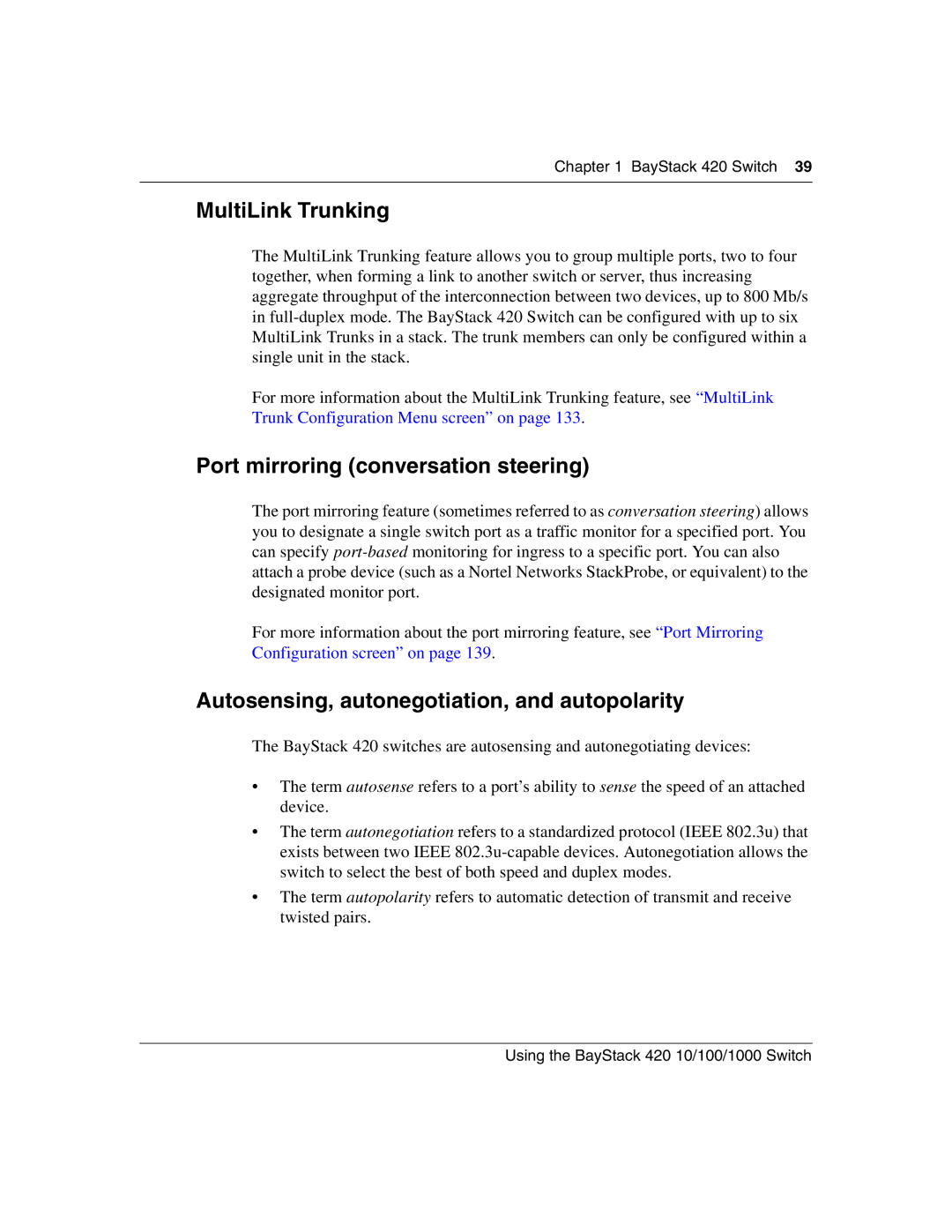
Chapter 1 BayStack 420 Switch 39
MultiLink Trunking
The MultiLink Trunking feature allows you to group multiple ports, two to four together, when forming a link to another switch or server, thus increasing aggregate throughput of the interconnection between two devices, up to 800 Mb/s in
For more information about the MultiLink Trunking feature, see “MultiLink Trunk Configuration Menu screen” on page 133.
Port mirroring (conversation steering)
The port mirroring feature (sometimes referred to as conversation steering) allows you to designate a single switch port as a traffic monitor for a specified port. You can specify
For more information about the port mirroring feature, see “Port Mirroring Configuration screen” on page 139.
Autosensing, autonegotiation, and autopolarity
The BayStack 420 switches are autosensing and autonegotiating devices:
•The term autosense refers to a port’s ability to sense the speed of an attached device.
•The term autonegotiation refers to a standardized protocol (IEEE 802.3u) that exists between two IEEE
•The term autopolarity refers to automatic detection of transmit and receive twisted pairs.
